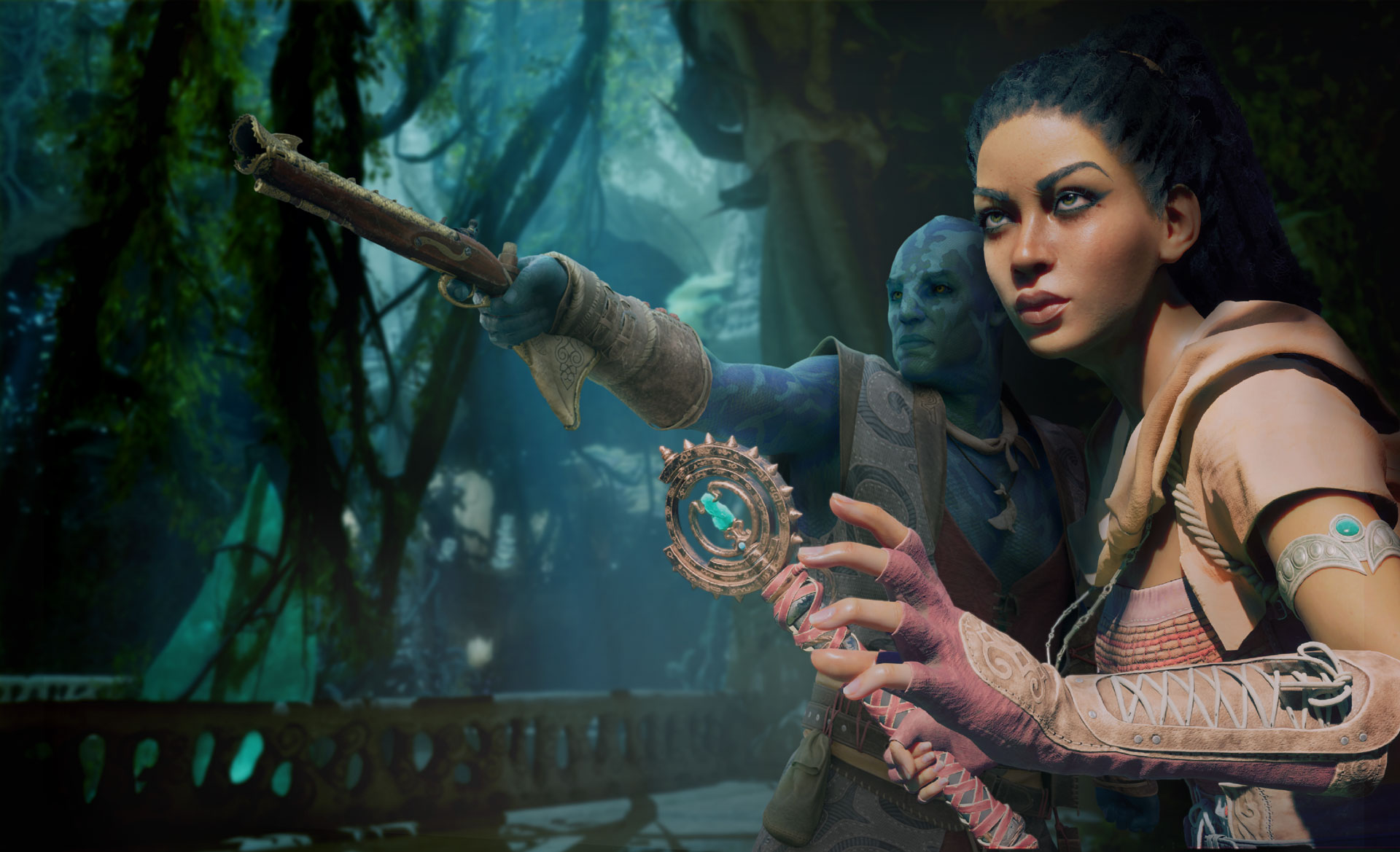
One of those quests involved a group of xaurips forcing a local settler out of her home. This quest alone has a variety of outcomes: you could go straightforward and fight the xaurips in her home or play it more stealthily and scout the location to report back on what you discover. But, as with many Obsidian-designed quests, there’s a bit more hiding under the surface if you decide to pry more information out of her, and that was the case here — I uncovered a more… spiritual connection to the xaurips that I was not expecting. This, as much as anything, encompasses Obsidian’s philosophy: the more you engage, the more you should get in return.
“My inclination is always to leave as much as possible for the player to discover,” says Narrative Designer Kate Dollarhyde. “When a world is easily digested and handed to the player, it takes away a lot of mystery because there’s less to find. We want the content to be legible, so players know what’s going on and how to move through quests, but I don’t want the correct answer to be obvious every time. It’s like a conversation between us, the designers, and the player. We give you a platform to have a conversation with us. We want you to engage in the conversation as much as we’re engaging in it. We provide tools for that but leave room for you to play the way you want.”
When designing choices, the narrative team breaks these down as short-term, medium-term, and long-term factors. Short-term choices involve decisions made during conversations that may result in an NPC revealing new information, offering a new way to end a quest, or reacting negatively. Medium-term choices may affect the outcome within the full length of a quest. Long-term choices influence events over the course of multiple quests or the entire game. “Whenever we sit down to design the critical path, the region stories, and the side quests, we’re always thinking in terms of short, medium, and long-term choices. It does get a little complicated trying to figure out how it all works together, but thankfully design is iterative,” adds Dollarhyde.
One of those quests involved a group of xaurips forcing a local settler out of her home. This quest alone has a variety of outcomes: you could go straightforward and fight the xaurips in her home or play it more stealthily and scout the location to report back on what you discover. But, as with many Obsidian-designed quests, there’s a bit more hiding under the surface if you decide to pry more information out of her, and that was the case here — I uncovered a more… spiritual connection to the xaurips that I was not expecting. This, as much as anything, encompasses Obsidian’s philosophy: the more you engage, the more you should get in return.
“My inclination is always to leave as much as possible for the player to discover,” says Narrative Designer Kate Dollarhyde. “When a world is easily digested and handed to the player, it takes away a lot of mystery because there’s less to find. We want the content to be legible, so players know what’s going on and how to move through quests, but I don’t want the correct answer to be obvious every time. It’s like a conversation between us, the designers, and the player. We give you a platform to have a conversation with us. We want you to engage in the conversation as much as we’re engaging in it. We provide tools for that but leave room for you to play the way you want.”
When designing choices, the narrative team breaks these down as short-term, medium-term, and long-term factors. Short-term choices involve decisions made during conversations that may result in an NPC revealing new information, offering a new way to end a quest, or reacting negatively. Medium-term choices may affect the outcome within the full length of a quest. Long-term choices influence events over the course of multiple quests or the entire game. “Whenever we sit down to design the critical path, the region stories, and the side quests, we’re always thinking in terms of short, medium, and long-term choices. It does get a little complicated trying to figure out how it all works together, but thankfully design is iterative,” adds Dollarhyde.






